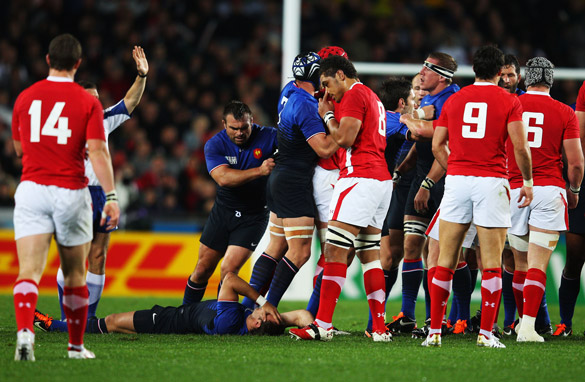Scene safety
The biggest catastrophe that can happen in a first aid scenario is where one casualty becomes two due to on-scene hazards and a lack of rescuer awareness. Before assisting anyone else, it is of utmost importance that you consider how safe the scene is before entering. For example, being aware of traffic hazards with casualties on or near roads, or electrical or water hazards.
If the match is still ongoing, there is a risk of injury to a rescuer. Players can also be a hazard by panicking or trying to help. Take control of the situation, let everyone know you are in charge both vocally and by your actions and prevent panic. Well-meaning interference from players such as rolling unconscious people over could seriously affect an injury.

Move other players away from the casualty as soon as possible
Rugby hazards
The referee may not have noticed the incident and may allow the game to continue. Even if he/she has noticed it, they may allow the game to continue until there is a natural break in play.
This exposes the rescuer to the potential for coming into contact with one or more players who are continuing to play the game. Therefore, if you are entering the field of play, you should consider the risks and benefits to both yourself and the casualty of what you plan to do and if your assessment is such that the game should be stopped immediately, then you should be clear about how you will communicate this to the officials.
Environmental hazards
Water
Water rescues are not integral to this course. However, the general principle of helping a conscious casualty who is in difficulty in the water is to avoid entering the water at all costs. Objects such as life preservers, Rugby balls or other flotation devices may be available that can be thrown to the casualty to help them stay afloat and swim ashore. It may be possible to reach them with long poles, tree branches or ropes, etc.
Electricity
Casualties who have been electrocuted either indoors or through contact with an outdoor electricity supply or line should be checked to ensure they are no longer in contact with the power source. If they are on the power source, e.g. cables, then this should be carefully removed away from the casualty using a non-conducting object such as a wooden broom handle.